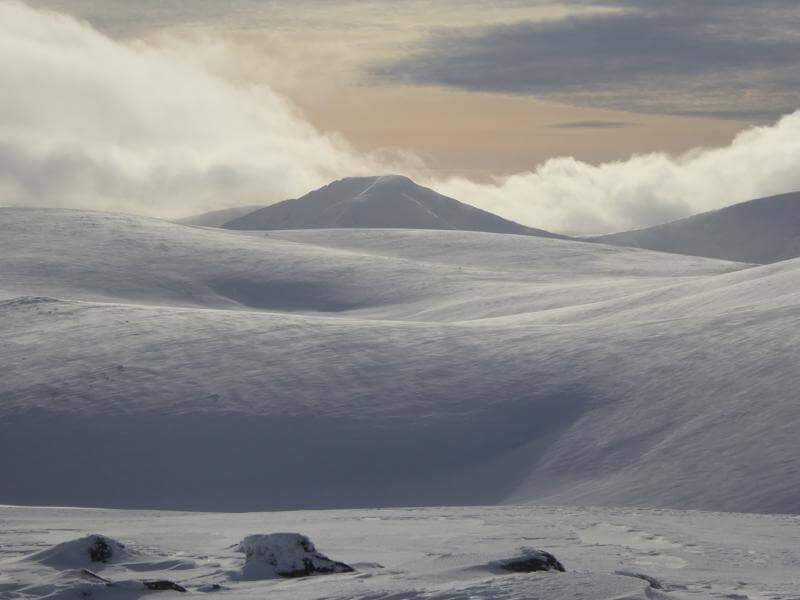
Photo Andrew Bateman, Spot Lochan Buidhe! Looking across the Cairngorm-Ben Macdui plateau towards Cairn Toul.
Come the winter months, one might be forgiven for thinking that lochs, lochans, tarns, lakes, etc would at least indicate their presence by a flat surface. Some do but don’t bank on it! High in the Cairngorms there are 3 lochs, all within 3 km of each other and all behave differently in winter.
Starting with the highest, Lochan Buidhe. It is perched on a broad shallow saddle at 1125m on the Cairngorm – Ben Macdui plateau close to where the Curran Hut once sat. Its high elevation and shallow nature mean it can pretty much freeze solid! Its bed is of raised granite blocks set in gravel. The blocks support the ice whilst allowing the ground water to drain out and so it can support no end of drifted snow thereby losing its dead flat surface.
At around 920m we have the pools on the floor of Coire an t-Sneachda. Again these are fed by ground water and drain out through the blocks and moraine to the north. Their water levels can vary considerably over time depending on the recent rain/melt. Frequently they will freeze over and then the water drains out from underneath the ice. The remaining ice sags under its own weight and the boulders punch through, again losing the flat surface. Any evidence of the pool can then be obscured by further snowfall.
Loch A’an – winter navigation & water features
Loch A’an (Avon) on the other hand self-levels since it’s much deeper. Remember water’s density is greatest at 4 Deg C so the warmest part of a loch is the bottom. Any snow drift on top of the surface ice will push it down into contact with slightly warmer water and melt it. The buoyancy is lost and over time the drift simply levels with the rest of the surface ice thereby maintaining a flat surface.
These tips and plenty more insights are covered on our 2 day winter navigation course
All content © Copyright Scot Mountain Holidays 2025
Responsive web design by Summit Web Solutions